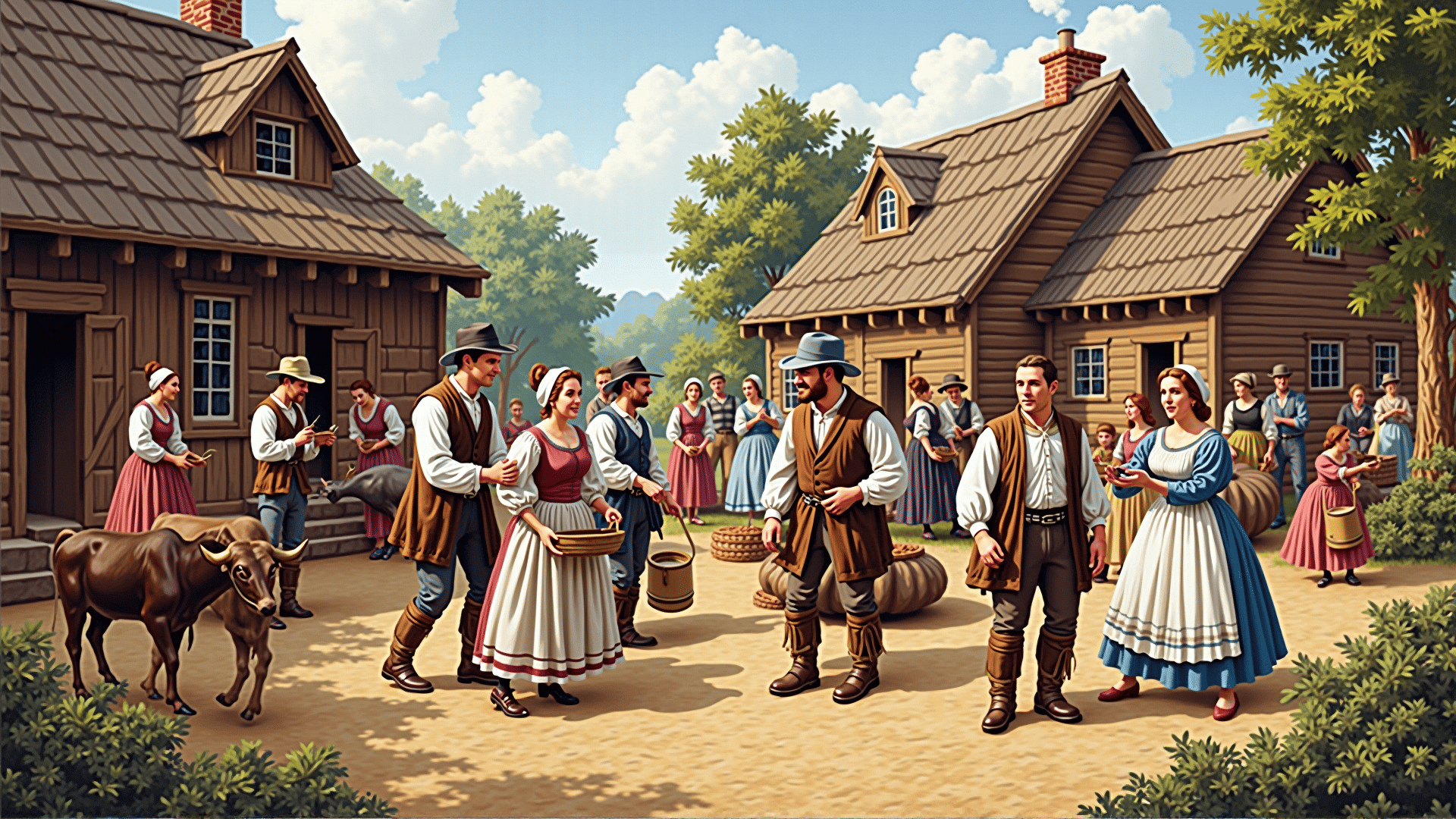When European settlers arrived in the New World, they brought with them a rich tapestry of traditions, beliefs, and practices from their homelands. Among these cultural imports was their distinctive style of dress, which played a significant role in the social and cultural exchanges that shaped the New World.
Initially, the clothing worn by European settlers mirrored the styles prevalent in their home countries. These garments were typically made from wool, linen, and leather, materials that were readily available in Europe. Men's attire often featured breeches, waistcoats, and heavy coats, which were well-suited for the colder climates of Europe. Women commonly wore long dresses with bodices and petticoats, accompanied by various head coverings such as bonnets or caps.
However, as settlers adapted to their new environments, they faced the need to modify their garments. The climate and landscape of the New World posed different challenges, prompting settlers to innovate and adapt their clothing styles for practicality and comfort. In warmer regions, lightweight fabrics became more prevalent. Cotton, which was grown locally, emerged as a popular choice for its breathability and comfort, replacing the heavier materials such as wool.
The settlers' interactions with Indigenous peoples also influenced clothing styles. Native American communities had long utilized materials such as animal hides and furs, techniques that settlers adopted to create garments appropriate for their new surroundings. This cross-cultural exchange led to the integration of Indigenous crafting methods and designs, evidenced in the use of fringes, beading, and embroidery that were incorporated into European-style garments.
Moreover, as settlements expanded and new generations were born in the New World, a distinct hybrid style began to develop. This style reflected a blend of Old World elegance and the practical necessities of pioneer life. For instance, the classic tricorn hat, a staple of 18th-century fashion, became popular in colonial America, symbolizing the settlers' European heritage while serving as a practical piece of headwear in unpredictable climates.
The influence of European settlers on the development of clothing in the New World was significant, creating a lasting impact on the evolution of dress in America. By adapting to new environmental and social conditions while drawing upon their cultural roots, settlers laid the foundation for a diverse and dynamic fashion landscape that continues to evolve today. Through these adaptations, the story of how clothing styles were transformed offers a fascinating insight into the broader process of cultural exchange and adaptation in the history of the New World.
